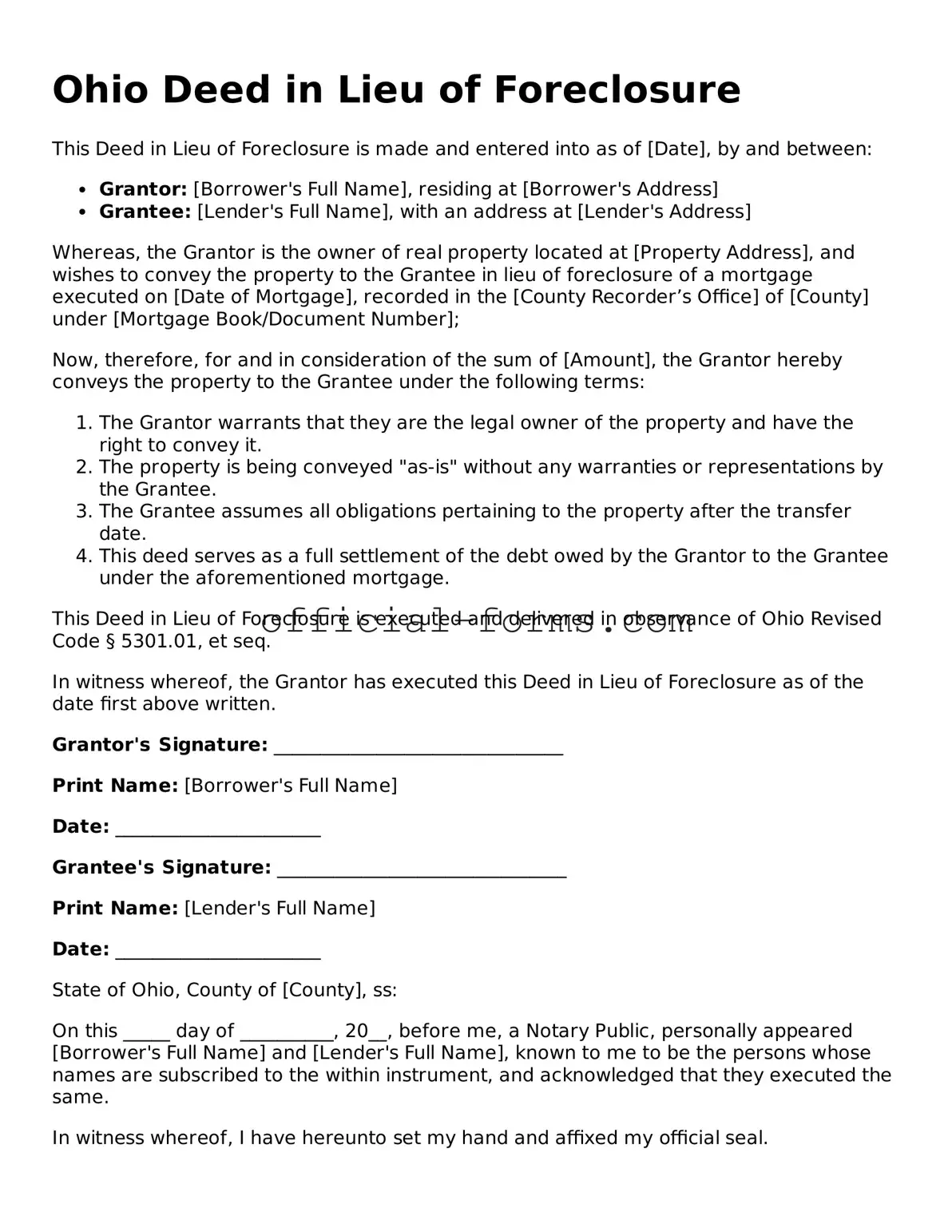Filling out the Ohio Deed in Lieu of Foreclosure form can be a daunting task, and many individuals make common mistakes that can complicate the process. Understanding these pitfalls can help ensure a smoother experience. One frequent error is failing to provide accurate property information. This includes the correct legal description of the property, which is crucial for the document's validity.
Another mistake involves overlooking the signatures required on the form. Both the borrower and the lender must sign the deed for it to be legally binding. Without these signatures, the document may be deemed incomplete, leading to further complications down the line.
Many people also neglect to include the date of the transaction. This seemingly minor detail is significant, as it establishes the timeline of the deed and can affect future proceedings. Additionally, errors in the notary section can invalidate the deed. A notary must witness the signing and provide their seal; failing to do this correctly can lead to rejection of the document.
Another common oversight is not understanding the implications of the deed itself. Some individuals may not fully grasp that by signing a Deed in Lieu of Foreclosure, they are voluntarily transferring ownership of the property to the lender. This can lead to unexpected consequences, such as the loss of any equity built up in the home.
It's also essential to ensure that all parties involved are properly identified. This includes confirming that the names on the form match those on the mortgage documents. Discrepancies can create confusion and delay the process. Furthermore, people often forget to attach any required supporting documents, which can lead to further complications.
Another mistake is not consulting with a legal or financial advisor before proceeding. The implications of a Deed in Lieu of Foreclosure can be significant, affecting credit scores and future borrowing ability. Seeking guidance can help individuals make informed decisions.
Lastly, individuals may fail to keep copies of the completed form and any correspondence related to the deed. Maintaining thorough records can be invaluable in case of future disputes or questions regarding the transaction. By avoiding these common mistakes, individuals can navigate the process more effectively and minimize potential issues.
